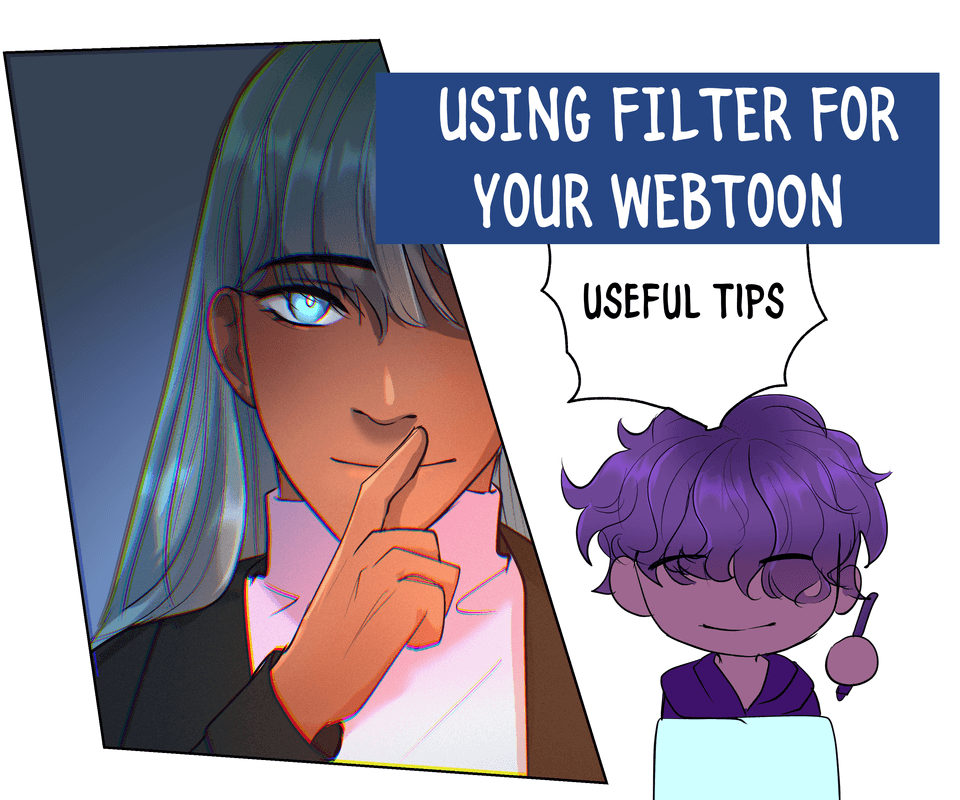4. Color Blocking & Color Scheme
[1] Color blocking
First I’ll block out the colors to separate each part before painting.
In the color blocking stage, I create a layer folder and create new layers inside it like for the line art.
I’ll make a new layer for each element or part.
Since there are a lot of small items that I’ll paint different colors, I separate them into different layer so that the colors don’t overlap.
I also separate the different colors on the character’s clothes.
For the color blocking, I used the [Fill] tool → [Refer other layers].
“Refer other layers” fills color by referring to information on all visible layers.
I also use the [Pen] tool > [Mapping pen] for small areas.
I start by coloring the character.
I hide all layers except for the layers with character lines so I can fill the colors more easily.
For color blocking, I don’t choose the color I want the picture to be at the end. Instead I use bold colors such as pink so that I can make sure there are no missed areas.
These are the layers I use for blocking the character, bear, and balloons. After I finish each layer, I lock the transparent pixels.
[2] Color scheme
After color blocking, I’ll decide the color of the skin and clothes. At this point the color scheme becomes roughly fixed, but I may change some parts later.
For each color-blocked layer, I use the [Edit] menu > [Tonal Correction] > [Hue/Saturation/Luminosity] and change the values to adjust the colors.
Hint: Tonal Correction: Hue/Saturation/Luminosity
Using the [Tonal Correction] > [Hue/Saturation/Luminosity] feature, you can change the color of a layer using sliders for hue, saturation, and luminosity, three integral properties of color.
Select the [Edit] menu > [Tonal Correction] > [Hue/Saturation/Luminosity] to open the [Hue/Saturation/Luminosity] dialog box.
Adjust the color of the image by changing the [Hue], [Saturation], and [Brightness] sliders in the dialog box.
・ Hue
This refers to the color tone. The slider adjusts the tone of the color, such as red, blue, and yellow.
・ Saturation
This changes the vividness of the color. The higher the value, the more vivid the colors become. Lower values make the colors grayer.
・ Brightness
This changes the brightness of the color. The higher the value, the brighter the colors become. It becomes completely black at -100 and completely white at 100.
I use [Tonal Correction] > [Hue/Saturation/Luminosity] to change the pink skirt to a navy shade.
I thought that pink was also cute, but decided that navy suited the overall illustration more.
I color block the objects behind the character in the same way, then adjust the colors while checking the overall balance.
Although time-consuming, I repeatedly paint the colors as I imagine them, then adjust the color scheme.
I make the colors in the [Color Wheel] palette. I first pick roughly the color I’m imagining, then make slight adjustments until it’s what I want.
I don’t like the saturated colors in the upper right corner of the color picker, so I tend to choose colors from slightly above or to the left of center, or slightly down and left.
Depending on my idea, I try to make sure small parts aren’t standing out too much, and that the color scheme is well-balanced overall.
For now I’ve finished the color scheme.
























Comment